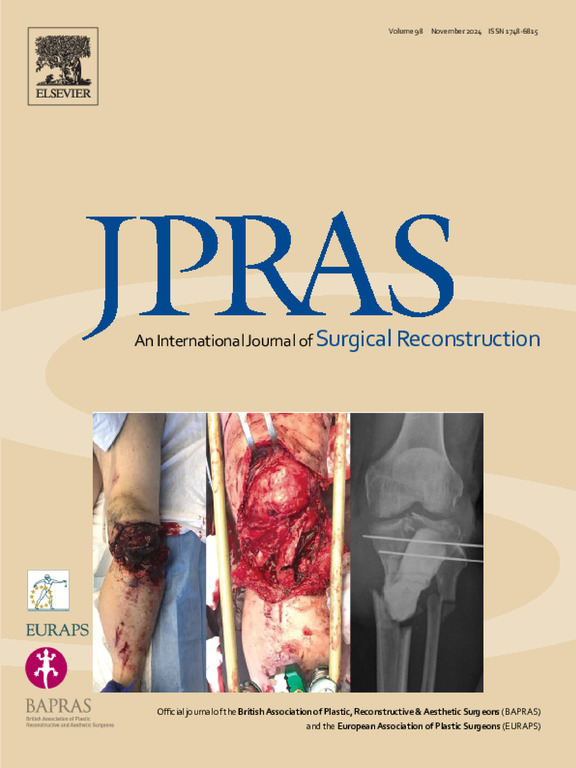Comparative assessment of the velopharyngeal structures between children with repaired cleft palate and noncleft population using 3-dimensional magnetic resonance imaging
IF 2
3区 医学
Q2 SURGERY
Journal of Plastic Reconstructive and Aesthetic Surgery
Pub Date : 2025-03-27
DOI:10.1016/j.bjps.2025.03.052
引用次数: 0
Abstract
Improved knowledge of normal velopharyngeal data and comparison with matched groups of children with repaired cleft palate are critical for understanding anatomical variability and the goals of surgery. The present study was designed to examine the differences in velopharyngeal structures between pediatric patients with repaired cleft palate and noncleft participants. Velopharyngeal variations were further analyzed by sex, cleft type, timing of cleft palate repair, and velopharyngeal insufficiency status in the pediatric population with cleft palate. A retrospective review was performed of pediatric patients undergoing magnetic resonance imaging (MRI) of the velopharynx between November 2020 and June 2023. Palatal and velopharyngeal measurements were obtained from the MRI scans. A total of 96 participants, aged 5–12 years, undergoing velopharyngeal evaluation with MRI were recruited: 48 participants with normal speech and without cleft palate and 48 patients with repaired cleft palate. The mean age of the noncleft group was 8.5 ± 2.3 and that of the cleft group was 6.4 ± 1.4. There was a statistically significant difference between cleft and noncleft participants in all variables (p < 0.001). Velopharyngeal and palatal measures of patients with repaired cleft palate revealed significant inadequacies compared with noncleft participants, with divergence between the different cleft types. These findings can be used as a reference for future comparisons in research that uses similar variables in the cleft population.
三维磁共振成像对腭裂修复患儿与非腭裂患儿腭咽结构的比较评价
提高对正常腭咽数据的了解,并与腭裂修复儿童的匹配组进行比较,对于理解解剖变异和手术目标至关重要。本研究旨在探讨腭裂修复患儿与非腭裂患儿腭咽结构的差异。通过性别、腭裂类型、腭裂修复时机和腭裂儿童腭裂人群中腭咽功能不全状况进一步分析腭咽变化。对2020年11月至2023年6月期间接受腭咽磁共振成像(MRI)检查的儿科患者进行了回顾性研究。通过MRI扫描获得腭和腭咽测量值。共招募了96名年龄在5-12岁之间的参与者,他们接受了腭咽MRI评估:48名言语正常且没有腭裂的参与者和48名腭裂修复的患者。非腭裂组平均年龄8.5±2.3岁,腭裂组平均年龄6.4±1.4岁。唇腭裂患者与非唇腭裂患者在所有变量上的差异均有统计学意义(p <;0.001)。腭裂修复患者的腭咽测量与非腭裂患者相比有明显的不足,不同类型的腭裂患者之间存在差异。这些发现可以作为将来在唇腭裂人群中使用类似变量的研究比较的参考。
本文章由计算机程序翻译,如有差异,请以英文原文为准。
求助全文
约1分钟内获得全文
求助全文
来源期刊
CiteScore
3.10
自引率
11.10%
发文量
578
审稿时长
3.5 months
期刊介绍:
JPRAS An International Journal of Surgical Reconstruction is one of the world''s leading international journals, covering all the reconstructive and aesthetic aspects of plastic surgery.
The journal presents the latest surgical procedures with audit and outcome studies of new and established techniques in plastic surgery including: cleft lip and palate and other heads and neck surgery, hand surgery, lower limb trauma, burns, skin cancer, breast surgery and aesthetic surgery.

 求助内容:
求助内容: 应助结果提醒方式:
应助结果提醒方式:


